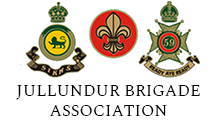Part 1 - world war I
August 1914; India was drawn into the most terrible war mankind had known. India at that time had a commitment to serve imperial needs and so, just two days into the war, the government of India offered a Corps of two infantry and two cavalry brigades for service wherever required.
The Indian expeditionary force was eventually sent to France where the British expeditionary force was shattered and exhausted after fighting against the German Army's overwhelming numbers.
The German Army strategy was to fight on two fronts: the bulk of the German force attacking France, striking through Belgium then isolating Paris and securing the Channel ports to prevent British reinforcements; in the East, a smaller Army would strike at Russia through Galacia.
A strong resistance from the Belgians, French and Russians meant that the German advance was slow, culminating in the battle for the Marne, fought by a combined Anglo-French army. A new type of siege warfare developed and spread up to 500 miles from the Swiss border to the English channel; trench warfare became established.
Systems of trenches were dug, reinforced with timber, steel and concrete. The conditions were appalling; rain, sleet and snow set the scene for ferocious artillery barrages and machine gun cross fire, even hand to hand combat ensued, often for the gain of only a few yards. Casualties were to run into several hundreds of thousands.
By the end of the war a grand total of 1,381,050 officers and men of the Indian Army, 285,037 of them being British, had been sent on service overseas.
